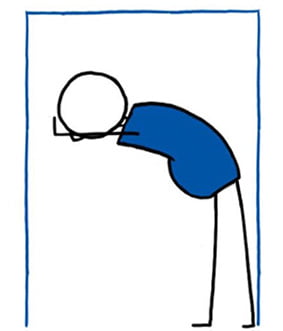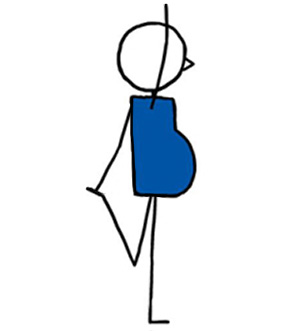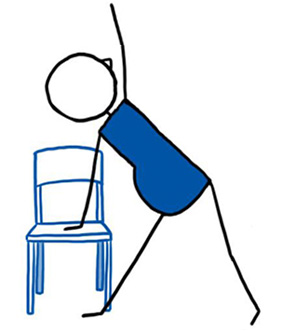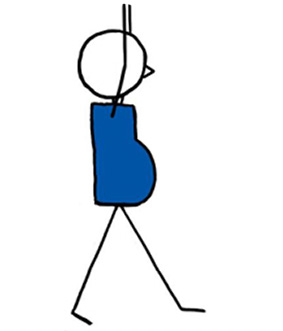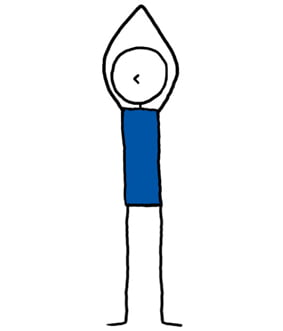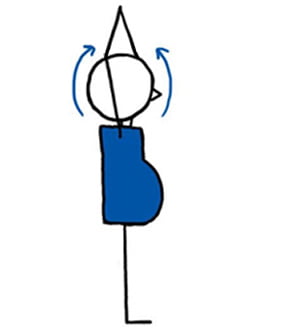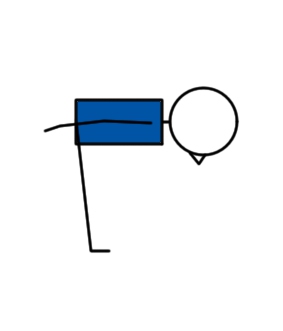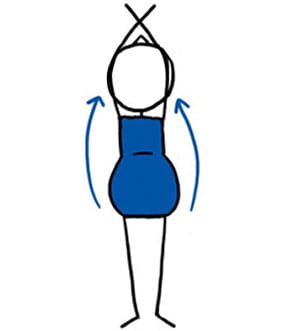
| Category: | Pregnancy Lesson Planner |
|---|---|
| Sub Category: | Standing |
| Types: | Balance, Object, Restorative, Standing, Strengthen, Stretch |
| Anatomy: | Arms & Shoulders, Core, Hamstrings, Hips, Lower Back, Middle Back |
| Chakras: | Base, Sacral Centre, Solar Plexus Centre |
| Therapy: | Back Pain, Fatigue, Poor Posture |
| Drishti: | Tip Of Nose |
| Dosha: | Kapha, Pitta |
T2. Stand with feet together. Arms on sides. Cross hands in front of body. Inhale. Raise arms over head (keep arms crossed). At same time bend head slightly backward and look up at hands. Spread arms out to sides at shoulder level. Reverse the movement (re-crossing arms above head). Lower arms.
Eases shoulders stiffness. Improves blood circulation.
Click here for lots of FREE downloadable Yoga lesson plans.
Click here for lots of FREE downloadable Pilates lesson plans.
- Whole body 4 incl. PregTri4 & Chair
- Pregnancy 2nd trimester 1
- Whole body 5 (incl Trimester2)
- Whole body 5
- Whole body 5 - COPY
- Pregnancy 2nd trimester 1 Chair - COPY
- Ask Genie1
- Whole body 8 (incl Tri2)
- Pregnancy sequence
- Pregnancy yoga class idea
- Pregnancy yoga class idea 2
- Whole body 15 (incl Trimester2)
- Pregnancy yoga class idea
- Whole body 30 (inclds antenatal)
- Whole body 30
- Ask Genie2
- Week 12
- Pregnancy yoga class week 2
- Pregnancy yoga class idea
- week 3 of 6
- Pregnancy yoga class 3 of 6
- Easter plan pregnancy
- April 5 | About Families
- pregnancy yoga
- Ask Genie3
- prenatal sun salutation level1
- pregnancy seated and floor
- Pregnancy week 1
- Strength and Resilience using awareness and inner teacher
- Moon Salutations
- 2021 May 4th & 5th
- Tan
- Moon Salutations
- Moon Salutations
- finding space in your day for you
- finding space in your day for you
- 2022 June 28th & 29th
- A staged approach to Surya Namaskara
- Good morning hips
- Pelvic floor friendly yoga plan
- Ask Genie 1
- Yoga in everyday life - from awakening to transitions into the day
- Yoga in everyday life - moving through the day session 3
- Piyo
- Yoga in everyday life - Communication inside and out - week 5 11.10.23
- Firefly
- Intuition and your yoga
- Intuition session 3 - Finding gratitude 25.1.24
- Prenatal yoga/pilates week 7
- Week 1: lunging goddesses
- Sun Salutation A
- Moon Salutations
- prenatal sun salutation level1
- Beginner's course wk 1
- Beginner\'s course wk 1
- Week 1: lunging goddesses
- Good morning hips
Mountain Pose FAQs
What Are Some Teaching Tips For Mountain Pose?
When observing your students, press down on their shoulders if they look like they are holding tension (shoulders have a tendency to raise when the person is stressed).
When observing your students and you see that their chest is collapsed, ask them to peel their shoulders back and down. Also, ask them to visualise their shoulders as ice blocks, and feel the ice melting (to help soften their “hard” shoulders).
What Are Some Stock Phrases Teachers Use When Teaching Mountain Pose That I Can Use In My Classes?
“Lift up through the top of your head”.
“Notice where your body is tugging due to stress or stiffness.”
“Be aware of when your mind has gone wandering.”
“Be aware of how tight your mouth is. You’ll be surprised how tight it is.”
“Are you clenching your mouth?”
“Are you furrowing your brow?”
“Do you feel as solid and stable as a Mountain?”
“Lift and spread your toes and the balls of your feet, then lay them softly back down on the mat.”
“Rock gently back and forth and side to side.”
“Feel your energy swirl up from your feet up to your core.”
“Allow your shoulder blades to draw toward each other and down the back, away from the ears.”
“Let your arms relax beside your torso, palms facing in or forward.”
“Tongue wide and flat on the floor of your mouth.”
“Throat soft.”
“Soften your eyes.”
“Breathe.”
“Stand with your feet hip distance apart, or together.”
“Feel a deep connection with the ground.”
“Don’t lock your knees.”
“Inner thighs slightly turn in.”
“Draw your abdomen slightly in and up to engage Mula Bandha, the pelvic floor muscles, and Uddiyana Bandha, the abdominals up to the diaphragm.”
“Feel the top of your sternum lifting towards the ceiling.”
“Keep your ribs soft.”
“Firm your shoulder blades onto your back.”
“Lift the crown of your head up.”
“Soften your face, especially the eyes and the jaw.”
What Are Some Variations Of Mountain Pose That I Can Teach To My Students?
A) Hands in prayer (namaste) mudra behind the back.
B) Hands raised over your head.
C) Eyes closed (use Mountain Pose as an opportunity to pause between poses, feeling the effects in your body).
D) Samashthiti (feet together).
E) Feet hip-distance apart.
F) Rock gently back and forth and side to side.
G) Block between the thighs. Squeeze the block and roll it slightly backwards to feel the engagement and rotation of the thighs.
H) Palms together in front of the chest in Namaste mudra.
I) Interlace your fingers, and extend the arms straight in front of you (shoulder stretch).
J) Mountain pose against a wall
K) Mountain pose with arms up (parallel to the ground).
L) Mountain pose with hands behind your hand.
M) Mountain lock pose.
N) Mountain palm lock.
What Are The Benefits Of Mountain Pose?
Improves posture and concentration. Strengthens legs. Engages core. Strengthens your thighs, knees, and ankles. Firms your abdomen and buttocks. Relieves sciatica. Reduces flat feet.
Mountain Pose looks simple, but a lot is going on under the hood. Your muscles will be working surprisingly hard.
Mountain Pose also acts as the “starting point” for many other poses.
What Needs To Be Engaged In Mountain Pose?
Mountain pose is almost a meditation. It allows you to hone your “body awareness”. When you’re in Mountain pose become aware of which parts of your body are engaged, and which are soft.
Your core should be engaged.
Your face, mouth, cheeks, hands, wrists, shoulders and legs should have a feeling of softness.




 Yoga Lesson Planner
Yoga Lesson Planner
 Pilates Lesson Planner
Pilates Lesson Planner
